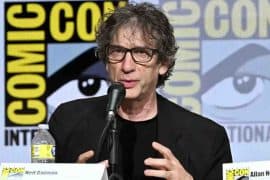
SPOILER: DEATH WILL VISIT THE BOOK THIEF THREE TIMES
A book needs only a humble mention a couple of times somewhere in the middle of an incessant and impromptu pillow talk when the narrator itself is Death, for even the slightest recognition of something so ominously stupefying is enough to draw the listener’s attention. Needless to say, ironing out the scruples of even a novice reader, Markus Zusak has produced a master piece in “The Book Thief”.
Set in the backdrop of Nazi Germany, the story commences with Death’s perseverance through the mundane drudgery of collecting souls. Human souls. What Death finds particularly bothersome is the breathing humans and as a way to distract itself from this vexatious element, Death picks up some intriguing stories from round the world. The Book Thief being one of them. The writing follows the life of Liesel Meminger, a nine-year old girl who is sent away from her family to live in a foster home. Amidst the intensity of separation and nightmares of her dead brother, Liesel finds solace in the company of her foster father and books. Her subsequent non-sacrilegious lust for books leads her onto different directions; even some audacious excursions, letting her meet different people. Liesel is a portrayal of a mature child who is highly sensitive to the emotions of people around her. Her personality is a unique blend of traits of dauntlessness, which also includes her fluency in sophisticated abusages, and consideration of other people. The uncertain times have given her more than her due of unexplained heaviness on shoulders and mind, and for her, the only refuge is the bosom of the books she has stolen. And yet, despite her fears and woes, at the end of the day she is just another nine-year old.
What is commendable about Zusak’s work is that the reader gets a chance to see the world both from Death’s eyes (dark and grim) as well as from a nine-year old’s (utterly picturesque). The book caters to the needs of both the pessimists and the optimists; one will find a dead-end but realize the very next moment that there is still hope. Sweetly enough the writer has neatly concealed the perpetual melancholy behind the moderate facade of good humor. Another thing that is worth mentioning is the author’s writing style. Undoubtedly, there has been a game of dice involving words; the author HAS played with words. The embroidery of words has given the text a beautiful pattern so much so that one has to admit that when Liesel’s world shatters into snowflakes of memories and she, after all, meets Death for one last time, there is a mystique finality to the whole scene that conjures a spell, keeping us captivated long after we have replaced the book on our shelves.
-Read this book because it is not everyday that you get an opportunity to step into the Grim Reaper’s shoes.
Shreya Bharadwaj([email protected])




Comments are closed.